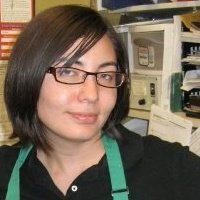I believe Voigt offers powerful insight for our class, especially for those of us who plan to be educators, about the difficulties many children face in reconciling their family life and personal struggles with the rigid anonymity of the classroom. Chapter two finds Dicey in a classroom"just like every other classroom she had ever been in" (38). Necessarily, the classroom must provide students with a level of familiarity that facilitates processing and memorizing new information - if the classroom does not register as familiar, the space may feel less safe and cause anxiety that impedes learning. To a certain extent teachers depend on the classroom to transmit cultural messages about power relationships and appropriate behavior to students, and on students to decode these messages and respond accordingly. However, as Voigt demonstrates, a child may exhibit appropriate classroom behavior while dealing with family and personal situations that distract from the goals of classroom instruction.
The Tillerman children struggle to integrate their personal feelings, family dynamics, peer interactions, and school obligations into coherent and meaningful understandings of themselves as individuals, and school is the site of many of their anxieties. While most children do not have to face the kinds of personal struggles that Dicey and her siblings face, all school-aged children do have to learn how to understand themselves as members of increasingly expanding communities. School-aged children must learn how to function as members of a family (often fraught with complications), members of various peer groups, members of the classroom, the school, the town, the country, etc. and also how to integrate those roles into a single personality. And since children spend over half of their waking hours in the school, most of this work is done in competition (or compliment) to curricular instruction.
Mr. Chapelle misses so many opportunities to help Dicey break through her impatient boredom and become a real member of the classroom. In their discussion about conflict Mina and Dicey each offer valuable insights, but Mr. Chapelle fails to offer Dicey the support she needs to fully think through the idea of conflicts "'between someone and himself'" (44). His biggest mistake is his failure to earn her trust. He publicly accuses her, without proof, of plagiarism or collusion; he embarrasses her, disrespects her, and loses her respect. Even after he apologizes and promises to change her grade "Dicey didn't say anything. She didn't care what he said [...] It didn't make any difference to Dicey what he said" (209-210). Mr. Chapelle's actions drive Dicey further away from school at the institutional level, yet she does find a link to school society through Mina's willingness to defend her. Voigt suggests that the people in the margins are still viable, and often more interesting, entrees to community and shared experience.
Voigt reinforces this perseptive through Mr. Lingerle, who, because his weight puts him in the margins of their society is able to look beyond the assumptions the school makes about Maybeth's potential, and advocate for her success in a way that is meaningful to her. James struggles to climb out of the margins and be accepted by his peer group, but must sacrifice his true talents to achieve acceptance. Sammy struggles to balance his desire to win familial stability through positive peer interactions, and then turns violently on his peers when they insult his family. The specific struggles of the Tillerman children are only representative of the innumerable complications school-aged children face as they attempt to integrate into the larger society. Every child will feel marginalized for some reason at some time, and some children do actually face family situations well beyond their maturity level. The teacher can never know for sure what a child's family life or interior struggles look like, but educators still have a responsibility to advocate for kids' interests, even within a system that doesn't have time or resources to recognize each child individually.
Dicey's Song informs adults' interactions with children, but it is written for children, and has amazing potential for child-readers. It allows some children to look beyond their more sheltered lives, and allows other children to see themselves pulled from the margins and represented as worthwhile characters with stories that matter. It gives voice to kids who don't quite fit in to other story lines.
Purpose for Imaginative Literature
15 years ago

